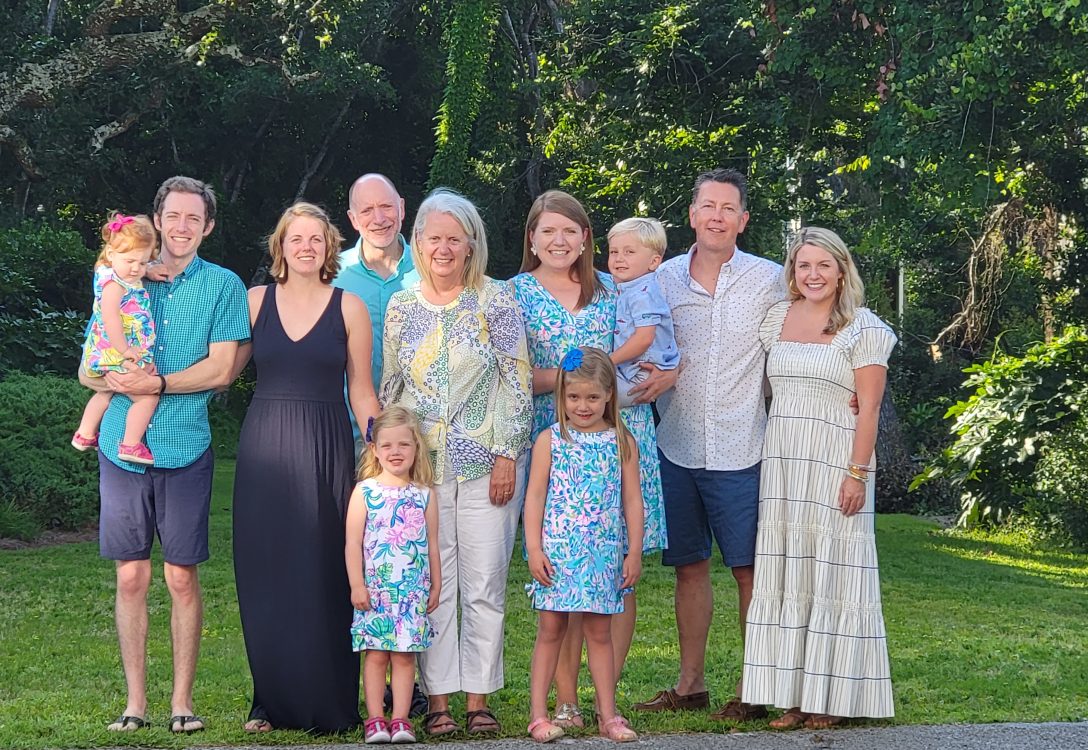On the morning of Saturday, April 22, I had orders to be at the home of our son and his wife by 7:15. Our daughter-in-law and their five year old daughter were runners in the Monument Avenue 10K. Their daughter was a participant in the kids one mile fun run. Her mother was running the full 10K/6.2 miles.
I made it to the house by the appropriate time. Soon we were loaded into the car driving toward the start line. Our daughter-in-law squeezed into the back seat between the two car seats holding their daughters. Along the way, we searched for out of state license plates and counted overpasses on the Downtown Expressway.
Our son’s pre-race search for parking put us in a VCU lot with a reasonable fee and a tolerable walk to the start area for the kids run.
Crossing the busy intersections on the walk to Monroe Park, we encountered friendly City of Richmond police officers who were patiently directing vehicles and pedestrians. The parents of our son’s wife met us in Monroe Park. This city landmark was a mass of humanity from corner to corner.
All types of vendors were stationed in the park for the post-race celebration and a mass of blue and white port-a-johns were positioned at the end of the finish line. No matter the direction, people were in motion.
We made it to the start area for the kids run, photos were snapped, an announcer offered encouragement, and in a blink they were off. As we started our walk back to the finish line for the kids run, I ran into my friend, Jonathan Austin. You can’t have a Richmond event without Jonathan sharing his magic, juggling, and humor.
Near the finish line, we positioned ourselves with good sight lines to see the runners as they completed the run. Race organizers had wisely created companion bib labels so that parents could run with their children. Soon we saw, our twosome coming into view. Their sprint to the finish line revealed two happy faces.

More photos were taken of our finishers, and now the logistics shifted again. As she walked off to the start line for the 10K, her daughters wished their mother good luck.
A long time ago, I ran in the Ukrops Monument Avenue 10K. I still have the t-shirt from the race. The front of the shirt has beautiful artwork created by children and youth who had been impacted by childhood cancer. I still miss the customer friendly Ukrops grocery stores, and sadly, despite our efforts, cancer is still an unwanted demon in all age groups across America.

We worked our way to the median just passed Stuart Circle and found a good spot on the curb to wait for the lead runners. Behind us, on the the other side of Monument, spectators cheered for the runners who had just started.
I’m sure many people will disagree, but as a runner, I always felt one of the best things about a road race is this— for a few hours part of a city is shutdown. It is quite a feeling to scamper down this still beautiful avenue knowing that for a short period of time runners have no worries in the world except to make it to the finish line.
It wasn’t long until we could see the flashes of blue lights from police vehicles and the pace car in front of the lead runners. Two male runners were in a tight side by side battle for the lead. More fast paced runners began to appear, including the first woman in the group who was sprinting at a blistering pace.
All kinds of humanity rolled by us. Neon colored running shoes were quite a splash of color as they pounded across the faded gray brick pavers. Some runners showed weariness in their faces, while others looked fresh, undeterred.
Our son spotted his wife in a crowd of runners, we all cheered and waved in support. We regrouped and started the walk to the finish line.
Along the way, we admired the architecture, the variety of music being offered, and the enthusiasm of the PA announcer cheering runners across the finish line.
It isn’t easy to stage this 10K. The logistics and planning details are endless. Richmond Sports Backers, the corporate sponsors, and all of the volunteers must be commended.
This whole event pivots off people. I want to know— why are we so considerate and compliant in this setting, and at other times, we are the exact opposite.
We found our way back to the car and headed home.
Thanks Richmond for another successful Monument Avenue 10K.
And to borrow the title from a Neil Young song, “Long May You Run.”


